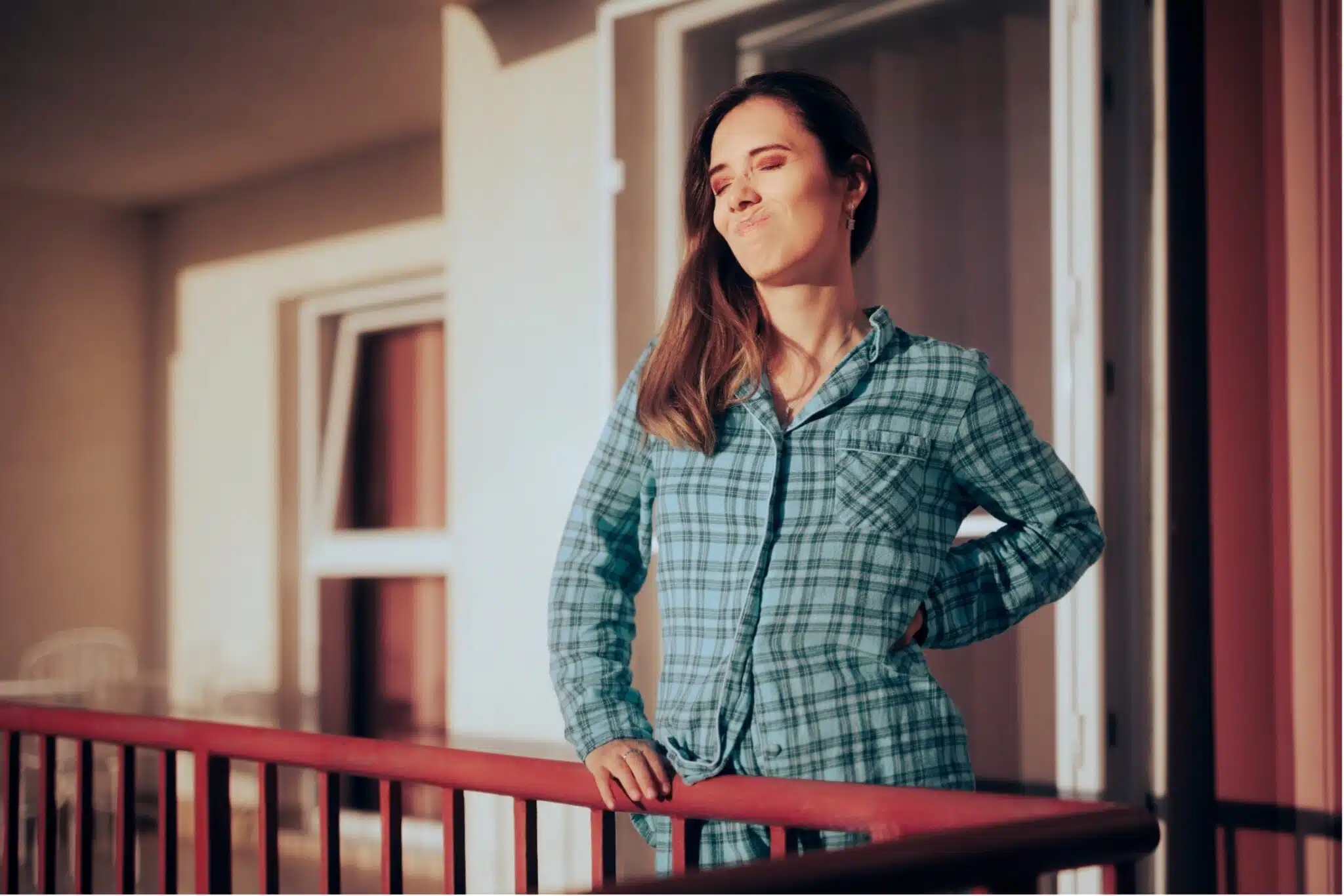Connecting the Dots Between Back Pain and IT Band Pain
The iliotibial (IT) band is a thick band of connective tissue that plays a crucial role in stabilizing your knee and hip during movement. But when you experience IT band pain, the issue might not start there. Many don’t realize that lower back issues can create a ripple effect that leads to IT band problems. When misalignment or weakness begins in the spine, it shifts body mechanics elsewhere, often putting undue strain on the IT band.
By addressing the root cause of IT band pain, such as underlying back pain, you can reduce discomfort and get back to the activities you love. The regenerative medicine treatments at QC Kinetix focus on resolving these issues without surgery or drugs. Whether dealing with IT band and lower back pain or just starting to uncover what’s behind your discomfort, understanding the source is the first step toward relief.
Understanding the IT Band: Anatomy & Function
The iliotibial band runs along the outside of your leg, stretching from the hip to the outer side of your knee. Made of dense fascia tissue, the IT band helps stabilize movements like walking, running, or any side-to-side motion. It works closely with muscles like the gluteus maximus and tensor fasciae latae, which control hip motion and posture.
When these surrounding muscles aren’t functioning properly or when your posture is off, the IT band takes on additional strain. For example, tight hips or weak glutes can increase IT band tension, leading to pain in your knee or even down your leg. This interconnected system highlights the importance of healthy body mechanics.
How Lower Back Dysfunction Triggers IT Band Issues
Your spine is the foundation of your movement, and any dysfunction there can lead to problems that cascade through other parts of your body. Poor alignment, muscle imbalances, or conditions like herniated discs in the lumbar spine are common triggers that impact your IT band and increase discomfort.
Here’s how various back issues affect the IT band:
| Back Issue | How It Affects the IT Band |
|---|---|
| Herniated disc | Alters gait and hip loading, tightening IT band |
| Weak core | Reduces pelvic control, increasing lateral stress |
| Sciatic-like symptoms | Lead to compensation patterns along the IT band |
- Herniated Disc
A herniated disc in your lower back can cause nerve irritation, which alters your gait and places uneven pressure on your hips. This leads to IT band tightness over time. - Weak Core
A weak core reduces your body’s ability to control pelvic alignment. When the pelvis tilts, it places extra lateral stress on the IT band. - Sciatic-Like Symptoms
Nerve compression in the lower back can lead to pain running down the leg. This often shifts how you move, further irritating the IT band.
Because the lumbar spine plays such an integral role in posture and movement, solving IT band issues often starts with addressing back pain.
Can IT Band Pain Ever Cause Back Pain?
While it’s more common for lower back dysfunctions to cause IT band pain, the reverse can happen, too. A tight IT band can indirectly lead to stress on your lower back. When the IT band is overly restricted, you may unconsciously alter how you stand or move, placing abnormal tension on the lumbar spine.
This compensation creates a vicious cycle. Poor posture caused by back pain worsens IT band tightness, and the subsequent movement adaptations aggravate back discomfort further. Strong glutes, flexible hips, and a healthy spine are all crucial elements for breaking this pain loop!
Why Conventional Approaches Miss the Full Picture
Many people focus on localized treatments for IT band pain, like foam rolling or stretching. While these methods can provide temporary relief, they often fail to address the deeper issue. Localized remedies don’t correct underlying spinal dysfunctions, imbalanced posture, or weak muscles that contribute to this pain cycle.
A whole-body approach is essential. Restoring alignment, strengthening weak areas, and correcting biomechanics support long-term relief. This is where QC Kinetix provides solutions that work. Our regenerative medicine treatments aim to identify and address the true cause of your discomfort by focusing on both the spine and the surrounding structures.
How QC Kinetix Approaches Back and IT Band Pain Differently
At QC Kinetix, we take a comprehensive and holistic approach to IT band and back pain therapy. Our noninvasive and drug-free therapies aim to reduce inflammation, repair damaged tissue, and improve function naturally. Instead of focusing only on the pain point, we assess your entire musculoskeletal system to uncover the root cause.
During your consultation, you’ll work with highly trained providers who will tailor a customized treatment plan designed to improve alignment, strengthen key muscles, and prevent recurrence. These treatments support long-term function without the risks or downtime associated with surgery. With QC Kinetix, you can feel confident you’re on a path to lasting relief and mobility.
FAQs About IT Band Lower Back Pain
Quick Answers to Common IT Band & Back Pain Questions
Can back problems cause IT band pain?
Yes, spinal imbalances and nerve irritation alter gait and hip function, often straining the IT band.
What aggravates iliotibial band syndrome?
Repetitive movement, improper biomechanics, prolonged sitting, and tight hips or weak glutes can all trigger IT band syndrome.
What nerve is behind the IT band?
The IT band itself doesn’t contain nerves, but irritation in nearby nerves, like the sciatic or gluteal nerves, can affect it indirectly.
How do I recover from IT band syndrome?
Recovery focuses on rest, correcting alignment, strengthening surrounding muscles, and resolving spinal imbalances.
Address the Source, Not Just the Symptoms
If you’ve been battling stubborn IT band pain, it’s time to consider that your back may be the real culprit. By targeting the source of the pain, rather than just the symptoms, you can regain control of your movement and your life. QC Kinetix specializes in noninvasive solutions that prioritize long-term relief and functionality.
Don’t wait any longer to get relief. Schedule a consultation at a QC Kinetix location near you and take the first step toward addressing the root of your discomfort!
Ready to start your healing journey? Schedule your free consultation today to discuss personalized treatment options.


